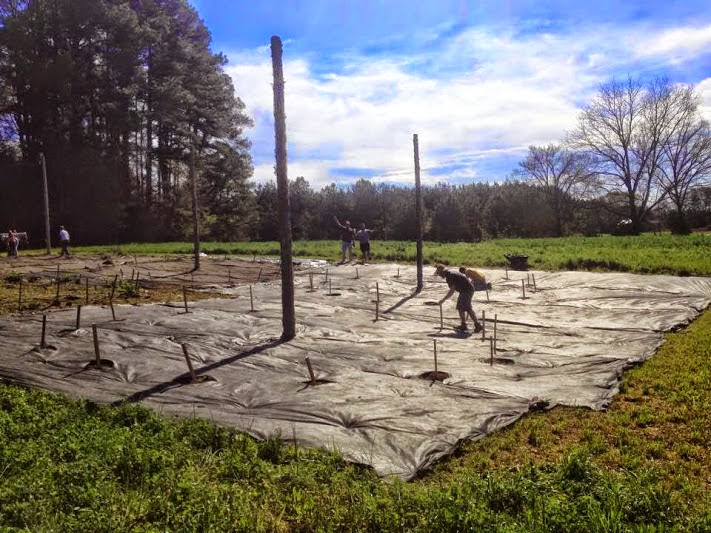 |
| This is Delilah, who supervised me while I was goofing off in the barn. |
This involved a trip to the barn, where David's goats Delilah and Buttercup have a stall. They were very curious about what I was doing there, so I went over to pay them a visit.
Then it was back to the task at hand. I was going to make connections between some of the black 1-inch hose and the blue 3-inch lay-flat. Accessories required for the assignment included a blowtorch, petroleum jelly, rubber cement, a flat head screwdriver, and a socket wrench.
Thinking back on it, I think I went to some USAF parties that required the same accessories.
 |
| Here's one of the valves I connected to the supply lines. |
Meanwhile, David and Eric were really making hay stringing cable. They managed to get all of the cross runs done, and got three of the lengthwise interior cables in place and connected on the north end. After they connect these to the south end and take the slack out, there are only six more cables to run and the trellis will be finished.
 |
| Meanwhile, David and Eric continued their work on the trellis. |
That's great news - it means that if the weather holds, we'll have a completed trellis by the time of our planting event on Saturday May 2. Hoping to see a few of my followers there...starts at 9am and the hop yard is across the street from Public House Produce (click on the link for the address).





















